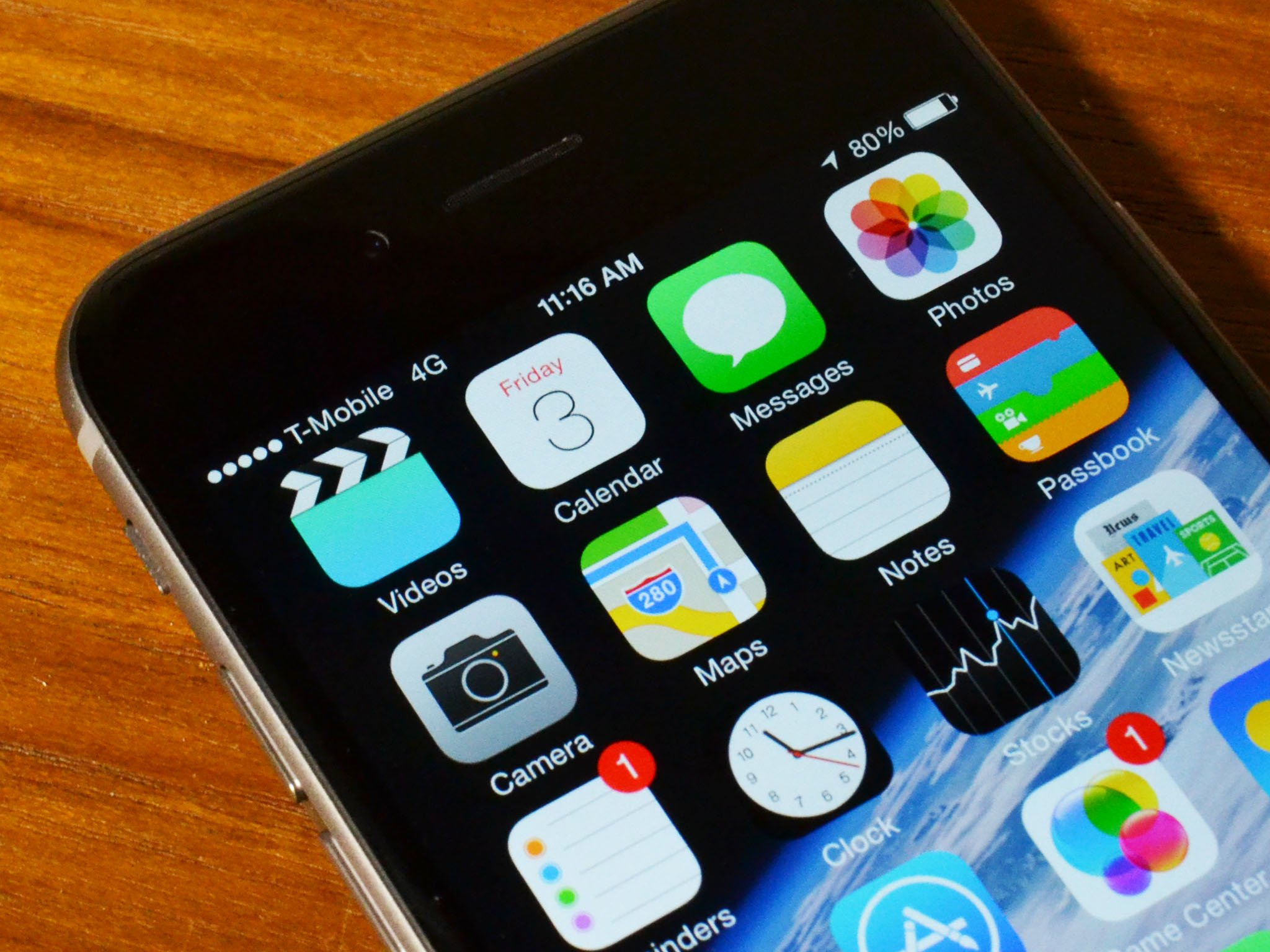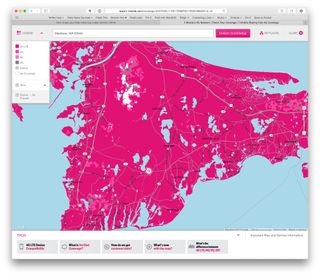A talk with T-Mobile about those new maps I complained about

Yesterday I spent some time talking with Grant Castle, T-Mobile's VP of Engineering and QA to better understand the way the data in those maps is sourced.
Mr. Castle took my pointed criticism in stride; he's accustomed to it, working as he does for telecom's most outrageous, salty CEO.
Mr. Castle admitted up front that the engineering models that his company and other cellular carriers use to determine coverage maps aren't perfect, but says that T-Mobile's goal really is to improve accuracy by incorporating customer data into the matrix as well.
The problem with coverage maps is that they just don't tell the whole story.
It turns out that when you install the T-Mobile My Account app on your phone, you're given the option of sending diagnostic info (anonymously) to T-Mobile. Castle explains that the app occasionally collects signal strength measurements, which are then transferred to T-Mobile. The app also distinguishes what type of technology was used during that signal strength measurement (LTE versus Wi-Fi Calling, for example).
It's that data which T-Mobile is incorporating into the new maps. Anywhere you see a hexagon on the map is a confirmed data point derived directly from that sort of information.
Not every bit of customer-derived data is incorporated into the maps, according to Castle. T-Mobile waits until it has what Castle calls "a statistically valid number of samples" before incorporating it into the maps.
The problem with coverage maps is that they just don't tell the whole story. Just because an area may have 4G LTE coverage doesn't necessarily mean you can do anything with that coverage. I often see one, even two bars of 4G LTE on my iPhone 6 (connected to T-Mobile's network), but I'll still time out when instant messaging or trying to connect to the Internet.
Master your iPhone in minutes
iMore offers spot-on advice and guidance from our team of experts, with decades of Apple device experience to lean on. Learn more with iMore!
Here's a practical example: I get one bar of 4G LTE coverage from the parking lot of my wife's work, also in the same town we live in. We often share a car, so I'll pick her up at the end of the day and try to let her know I'm there by texting or calling her. Her work, and the commute home, is in the dark magenta coverage area we see on this new T-Mobile map:

If I can actually connect when I call, I'm amazed. If I can be understood, it's almost miraculous. Forget about actually using data. Just the other day she called me from the parking lot, and I couldn't understand a word she was saying. Yet she technically had a 4G LTE connection.
Here's another: Because in-house coverage for T-Mobile is so poor, and because Wi-Fi Calling by design prevents you from using some Handoff features like Call Relay, which I depend on, we don't use Wi-Fi Calling in my house. Instead, my family and I rely on a free T-Mobile-provided signal booster in order to use our phones in the house. Without it we're lucky to get one bar anywhere in the house.
T-Mobile still has significant technical challenges before it.
With the signal booster propped in an upstairs window, we get four or five bars continuously. So all the data we're reporting to T-Mobile show a strong, healthy 4G signal. Even though that's not reflective of what anyone off my property line is going to see, or indeed even what I see when I walk into my back yard or my driveway and try to make a call.
T-Mobile still has significant technical challenges before it. The company is trying to bolster rural coverage, and a particular weakness of T-Mobile, indoor coverage, by deploying cell transmitters that operate on a 700 MHz radio band. AT&T and Verizon both use 700 MHz and have much better indoor and outlying area coverage than T-Mo. That's taking time, and it's a patchwork effort because of problems with digital video broadcasts in some areas. What's more, not all phones T-Mobile sells or supports work with the 700 MHz LTE band it's deployed, including the iPhone 6 and iPhone 6 Plus.
From my perspective, I remain a T-Mobile customer for a few reasons: First and foremost, I pay a lot less for T-Mobile service than I did for AT&T, and get a lot more for the money.
Second, I genuinely like my interactions with T-Mobile support people: Their customer service and tech support folks really have gone above and beyond to help when I've needed it.
Third, despite my local connectivity woes, I've seen T-Mobile coverage improve dramatically in my area over the past two years. It's not perfect, by any stretch, but it is getting better.
And finally, I enjoy supporting the scrappy upstart: I like how disruptive T-Mobile has been to the competition, and I like being in their corner.
I just wish T-Mobile's marketing wouldn't get ahead of their engineering. Because no one likes being lied to. And based on what I read in the discussion thread on my last editorial and what I heard from you on social media, neither do you.
Am I off base? Is T-Mobile just doing what every other carrier does? Sound off in the comments and let me know what you think.
